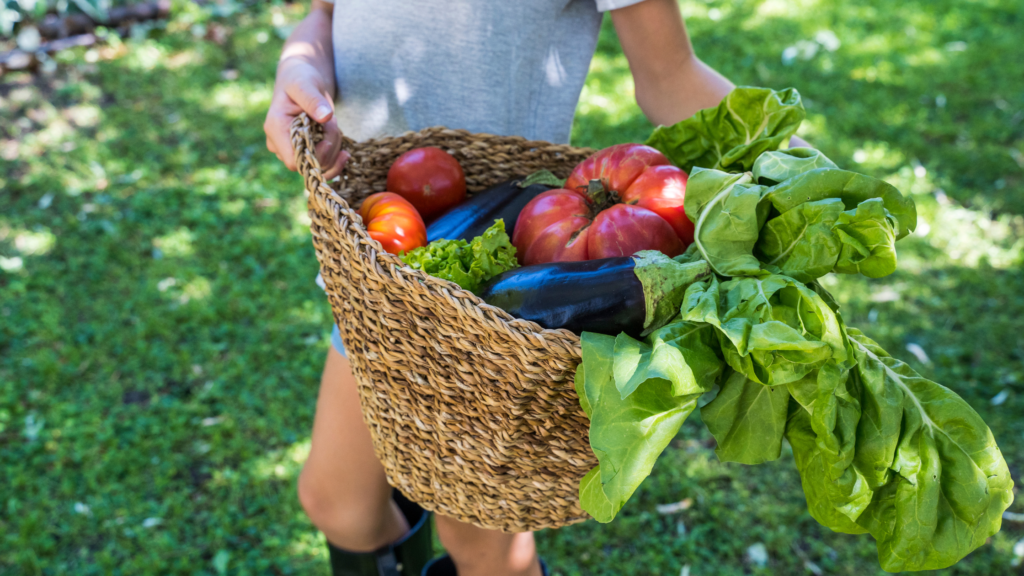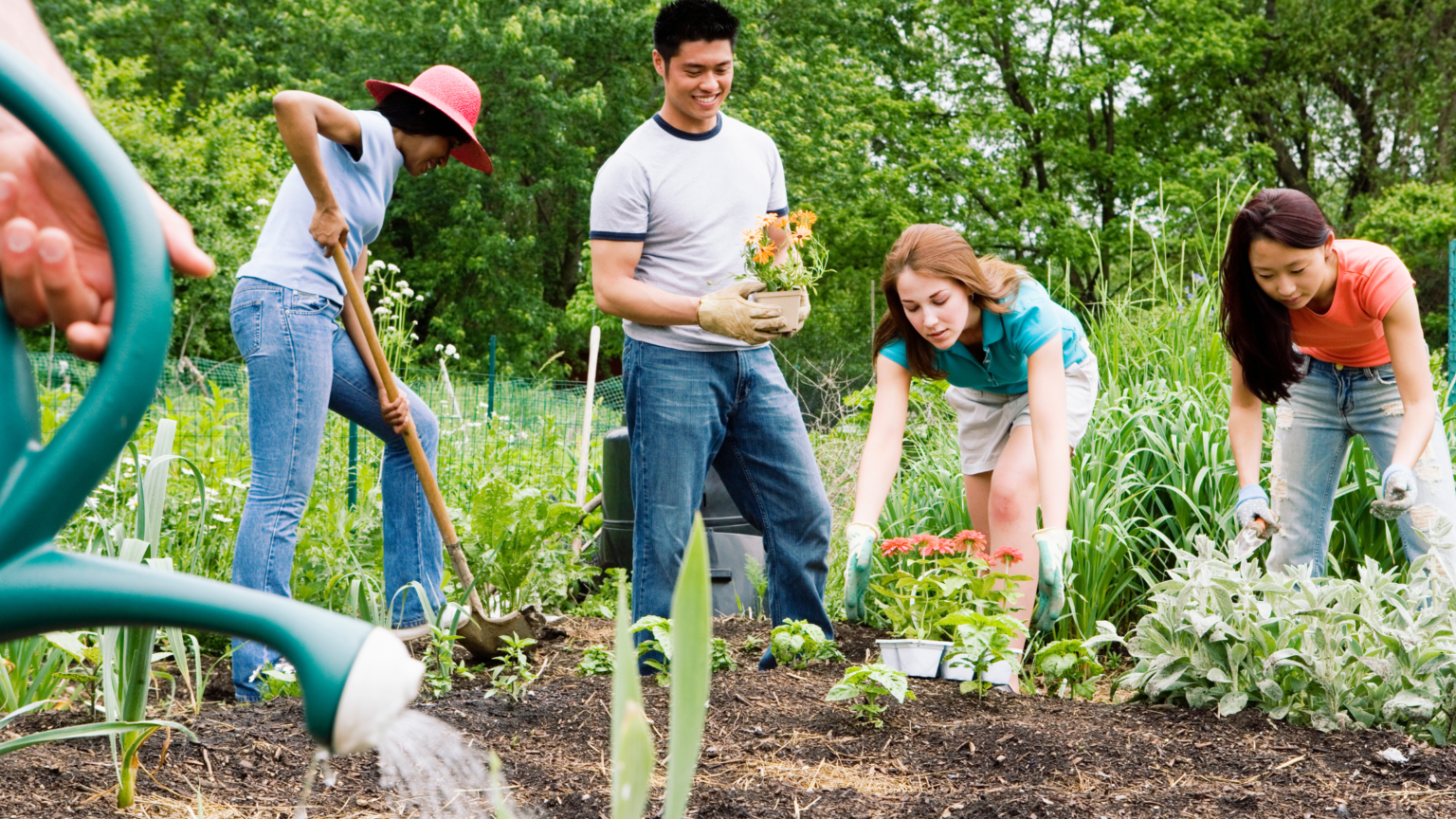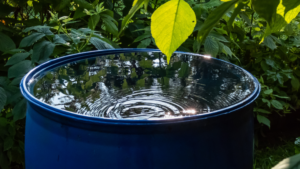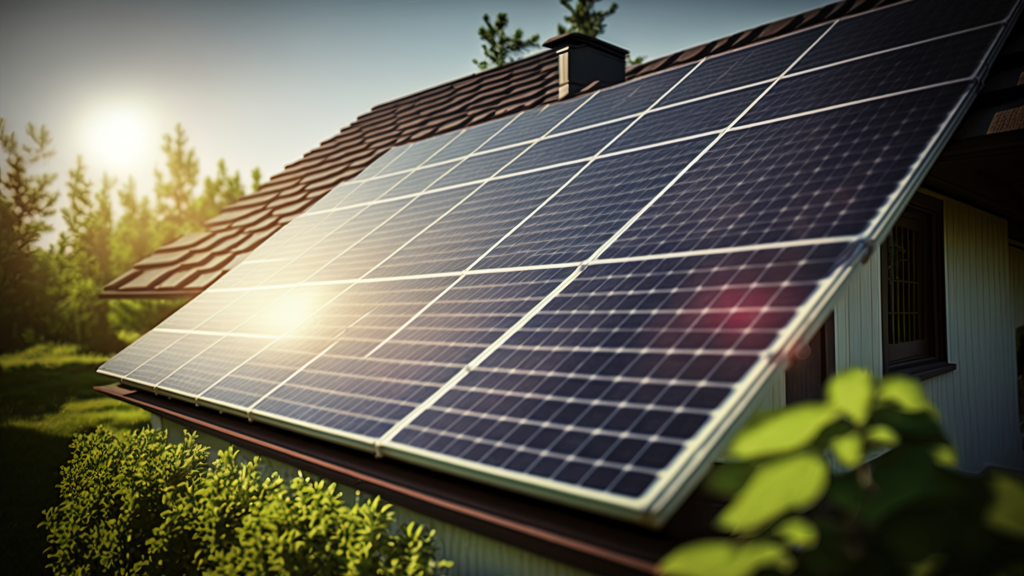The average American household throws away approximately 1,100 pounds of garbage each year. This staggering figure underscores the potential impact of reducing waste through sustainable living practices. However, sustainable living isn’t just about reducing waste; it derives the eco-conscious choices of individuals and families about their consumption habits in order to minimize their negative impact on the environment.
Our planet’s in trouble. It’s hard to ignore the crazy weather, the melting ice caps, and all the pollution. It feels like something big is wrong, right? But here’s the good news: we can be part of the solution. Small steps can make a huge difference.
So, if you’re reading this, you’re probably interested in making some positive changes for your family and the planet. That’s awesome!
This sustainable living guide is designed to help you embrace sustainable living with practical and impactful tips. We’ll cover everything from energy efficiency to eco-friendly transportation, and by the end, you’ll have a toolkit full of sustainable living tips to help transform your family’s future.
Why Sustainable Living?
So, why should we care about sustainable living? Well, it’s not just about saving the planet (though that’s a big part of it). It’s also about creating a healthier, happier life for you and your loved ones.
Sustainable living can help you save money, improve your health, and even build stronger communities. Let’s explore some reasons why sustainable living is important.

Environmental Benefits
First off, let’s talk about the environment. By adopting sustainable practices, we can reduce our carbon footprint, conserve natural resources, and protect ecosystems. For example, switching to renewable energy sources like solar and wind can significantly lower the amount of carbon dioxide we release into the atmosphere. Plus, sustainable farming techniques like crop rotation and organic farming help maintain soil health and reduce the need for chemical fertilizers.
The city of Copenhagen aims to be carbon neutral by 2025 and has implemented extensive measures to reduce emissions, promoting cycling as a primary mode of transportation and a highly efficient district heating system that services 98% of all households.
Economic Benefits
Sustainable living isn’t just good for the planet; it’s also good for your wallet. Energy-efficient appliances and renewable energy sources can lead to significant cost savings on utility bills. And let’s not forget about job creation.
The shift towards a sustainable economy creates numerous job opportunities in renewable energy, sustainable agriculture, and green technology sectors. Such as, Germany’s Energiewende (energy transition) has reduced carbon emissions and created over 300,000 jobs in the renewable energy sector.
Health and Well-being Benefits
Last but not least, sustainable living can have a huge impact on your health and well-being. Reducing exposure to pollutants and promoting healthier lifestyles can lead to a higher quality of life.
For instance, using electric vehicles and supporting clean energy can improve air quality and reduce respiratory illnesses. Plus, choosing organic and locally-sourced foods can provide fresher, more nutritious options for your family.
The American Heart Association has also confirmed that communities with higher rates of walking and cycling have lower rates of obesity and cardiovascular diseases.
The Four Pillars of Sustainability
Now that you know why sustainable living is important, let’s explore the four pillars of sustainability that are central to any sustainable living guide.
1. Minimizing Waste
Reducing waste is one of the easiest tips for sustainable living. Simple actions like using reusable shopping bags, avoiding single-use plastics, and buying products with minimal packaging can make a big difference.
And don’t forget about recycling and composting! Proper recycling and composting can divert a significant amount of waste from landfills and create nutrient-rich soil for gardening.
San Francisco has achieved an 80% landfill diversion rate through aggressive recycling and composting programs, making it one of the greenest cities in the United States.
2. Limiting Natural Resource Use
Conserving natural resources is another critical aspect of sustainability. Implementing energy-efficient practices, such as using LED lighting and insulating homes, can significantly reduce energy consumption.
Simple measures like fixing leaks and using water-saving appliances can greatly reduce water usage. And adopting sustainable farming practices can conserve soil, water, and biodiversity.
The Bullitt Center in Seattle is one of the greenest commercial buildings in the world, utilizing rainwater harvesting, solar panels, and composting toilets to minimize resource use.

3. Wise Environmental Use
Using the environment wisely involves making thoughtful decisions about interacting with and utilizing natural surroundings.
Protecting and restoring natural habitats, such as forests and wetlands, is crucial for maintaining biodiversity and ecosystem health. Sustainable land use practices, like urban green spaces and community gardens, can enhance quality of life while preserving natural areas.
The High Line in New York City is an excellent example of urban green space that transformed an old railway line into a vibrant public park, promoting biodiversity and community engagement.
4. Quality Living Environments
Ensuring quality living environments involves creating spaces that promote health, well-being, and sustainability. Improving indoor air quality by using non-toxic building materials and ensuring proper ventilation can enhance health and well-being. Incorporating sustainable design principles, such as energy-efficient construction and renewable energy sources, can create homes that are both comfortable and environmentally friendly.
BedZED (Beddington Zero Energy Development) in London is a great example of a a pioneering eco-village that incorporates sustainable construction materials, renewable energy, and green spaces to create a high-quality living environment.
Energy Efficiency
Energy efficiency is a cornerstone of sustainable living. By making simple changes and harnessing renewable energy sources, we can significantly improve energy efficiency in our homes.

Simple Changes to Save Energy
Small, everyday actions can lead to substantial reductions in energy consumption.
Switching from incandescent or fluorescent light bulbs to LED bulbs is one of the simplest and most effective ways to save energy. For instance, Los Angeles replaced over 140,000 streetlights with LED bulbs, resulting in a 63% reduction in energy use and saving the city millions of dollars annually.
Upgrading to energy-efficient appliances, such as Energy Star-rated refrigerators and washing machines, can also lead to significant cost savings on utility bills.
Harnessing Renewable Energy
In addition to making simple changes, harnessing renewable energy sources can further enhance energy efficiency and reduce reliance on fossil fuels. Solar panels and wind energy are two of the most accessible and effective renewable energy options for households.
While the initial investment in solar panels can be significant, the long-term savings on electricity bills can be substantial. And for homes in suitable locations, wind energy can be an excellent renewable energy option.
Waste Reduction
Reducing waste is a fundamental aspect of sustainable living. By composting and recycling, we can significantly reduce the amount of waste sent to landfills and contribute to a healthier environment.

Composting
The city of Portland, Oregon, implemented a city-wide composting program that has diverted over 200,000 tons of food waste from landfills since its inception. Starting a compost bin at home is a straightforward process that can have significant environmental benefits.
Composting organic waste like food scraps and yard trimmings can reduce landfill usage and create nutrient-rich soil for gardening. Plus, composting offers numerous benefits, such as improving soil health, reducing greenhouse gas emissions, and recycling nutrients back into the soil.
Recycling
Proper recycling involves understanding what materials can be recycled and how to prepare them for recycling. Commonly recyclable materials include paper, cardboard, glass, metal, and certain plastics.
Involving the entire family in recycling efforts can make the process more effective and enjoyable. Teach family members about the importance of recycling and how to do it properly, and set up a designated area in your home for sorting and storing recyclables, such as separate bins for each type of waste.
Sweden has become a global leader in recycling, with nearly 99% of household waste being recycled or composted. The country even imports waste from other countries to keep its recycling plants running.
Sustainable Food Choices
Making sustainable food choices is an important aspect of living sustainably. By supporting local and organic food sources and incorporating more plant-based meals into our diets, we can positively impact the environment, our health, and the local economy.

Supporting Local and Organic
Buying local food has numerous benefits, such as reducing carbon footprints, supporting local economies, and providing fresher and healthier options. Understanding organic labels can help consumers make informed choices about the food they purchase. Organic foods often contain higher levels of certain nutrients and are free from residues of synthetic pesticides.
For instance, the 100 Mile Diet movement encourages people to eat foods grown within 100 miles of their home. This practice has shown to reduce the carbon footprint associated with food transportation significantly and supports local farmers.
Incorporating Plant-Based Meals
The Eat-Lancet Commission, a global research initiative, has proposed a planetary health diet that emphasizes plant-based foods. This diet could potentially feed 10 billion people by 2050 while significantly reducing the environmental impact of our food systems. Incorporating more plant-based meals into your diet is another effective way to support sustainable food choices.
Plant-based diets have numerous health and environmental benefits, such as reducing the risk of chronic diseases and lowering greenhouse gas emissions. Plus, producing plant-based foods requires fewer natural resources compared to animal agriculture.
Water Conservation
Water conservation is a critical component of sustainable living. By fixing leaks, installing water-efficient fixtures, and adopting smart water usage practices, we can significantly reduce water wastage and improve overall water use efficiency in our homes.

Fixing Leaks and Efficient Appliances
Identifying and repairing leaks can save a substantial amount of water. Upgrading to water-efficient fixtures and appliances, such as low-flow showerheads and dual-flush toilets, can lead to significant water savings without compromising performance.
The EPA’s WaterSense program has helped American households save trillions of gallons of water and billions of dollars in water and energy bills by promoting water-efficient products and practices.
Smart Water Usage
Efficient watering practices, such as watering plants during the early morning or late evening and using drip irrigation systems, can help conserve water while maintaining healthy plants and gardens.
Simple changes in daily habits, such as reducing shower time and running dishwashers and washing machines only with full loads, can also lead to significant water savings.
Tucson, Arizona, implemented a comprehensive water conservation program that includes incentives for rainwater harvesting and graywater reuse, resulting in a 30% reduction in per capita water use.
Eco-Friendly Transportation
Transportation is one of the largest contributors to greenhouse gas emissions, making it a critical area for implementing sustainable practices. We can significantly mitigate our environmental impact by reducing our carbon footprint through carpooling, public transport, biking, walking, and transitioning to electric vehicles.

Reducing Carbon Footprint
Carpooling and public transportation are effective ways to reduce the number of vehicles on the road, thereby decreasing carbon emissions. Biking and walking are the most eco-friendly modes of transportation, producing minimal carbon emissions and promoting healthier lifestyles.
Big or small communities can come together to promote carpooling for their daily commute and make a great impact on the environment.
Transitioning to Electric Vehicles
Electric vehicles (EVs) offer a promising solution for reducing transportation-related emissions. EVs produce zero tailpipe emissions, reducing air pollution and greenhouse gas emissions. Governments and utilities offer various incentives and rebates to encourage the adoption of electric vehicles, making them more affordable and accessible.
Norway leads the world in EV adoption, with over 50% of new car sales being electric vehicles. This transition has been supported by extensive government incentives, including tax exemptions and free access to toll roads and ferries.
Sustainable Fashion
Sustainable fashion is an essential aspect of living sustainably. By choosing ethical brands and embracing second-hand shopping, we can reduce our environmental impact and support fair labor practices.

Choosing Ethical Brands
Identifying ethical brands can be challenging, but looking for certifications, transparency, sustainable materials, and company values can help. Ethical fashion offers numerous benefits, such as reducing environmental impact, ensuring fair labor practices, and providing high-quality products.
Patagonia is a well-known brand committed to sustainability. They use recycled materials, provide transparency about their supply chain, and donate a portion of their profits to environmental causes.
Embracing Second-Hand Shopping
ThredUp, an online thrift store, has helped reduce waste by encouraging consumers to buy second-hand clothing. According to their 2021 Resale Report, buying second-hand can reduce a garment’s carbon footprint by 82%.
Second-hand shopping is an excellent way to reduce waste and promote a circular economy. If you have never tried thrift shopping, do it at least once in your life. It can be a fun and rewarding experience, and it offers several benefits, such as reducing waste, conserving resources, and promoting sustainability.
Green Cleaning Products
Switching to green cleaning products is a significant step towards a more sustainable and healthier lifestyle. By using natural cleaners and creating DIY cleaning solutions, you can reduce your exposure to harmful chemicals, minimize environmental impact, and save money.

Using Natural Cleaners
Natural cleaners are made from eco-friendly ingredients that are safe for both your home and the environment. Common natural ingredients include white vinegar, baking soda, castile soap, essential oils, and lemon juice. These ingredients are effective and can be used in various cleaning recipes.
For instance, Seventh Generation is a brand that focuses on creating plant-based cleaning products free from synthetic fragrances and dyes. Their products are designed to be biodegradable and environmentally friendly, making a significant positive impact on the environment.
DIY Cleaning Solutions
Creating your own cleaning solutions is a simple and effective way to ensure that your home is cleaned with safe, natural ingredients. Homemade cleaners are often cheaper than store-bought alternatives and reduce packaging waste. Plus, they allow you to control the strength and ingredients, ensuring that you use only what is necessary for the task at hand.
A quick recipe: For an all-purpose cleaner, mix equal parts white vinegar and water in a spray bottle, and add a few drops of your favorite essential oil for fragrance. This solution works well on countertops, sinks, and other surfaces.
Conclusion
Wow, we’ve covered a lot of ground in this sustainable living guide! From energy efficiency and waste reduction to sustainable food choices and eco-friendly transportation, there are so many ways to make a positive impact. Each small step you take can lead to significant changes for your family and the planet.
So, what’s next? Start small.
Maybe switch to LED bulbs or begin composting. Gradually incorporate more sustainable habits into your daily routine. Remember, every action counts, no matter how minor it may seem.
Share these sustainable living tips with your family and friends, and encourage them to join you on this journey towards a more sustainable future. By adopting the practices outlined in this sustainable living guide, you’re not just making a difference today—you’re investing in a brighter, healthier future for your family and the planet.
Whether it’s reducing waste, conserving water, or choosing eco-friendly transportation, every step you take brings us closer to a more sustainable world.
FAQs
A sustainable living guide provides practical tips and strategies for adopting a more eco-friendly and sustainable lifestyle. It covers various aspects such as energy efficiency, waste reduction, sustainable food choices, water conservation, and eco-friendly transportation, helping individuals reduce their environmental impact and promote a healthier planet.
Sustainable living involves making choices that minimize our impact on the environment and ensure the well-being of future generations. This includes reducing waste, conserving natural resources, using renewable energy, and supporting ethical and eco-friendly practices in everyday life.
Some sustainable living tips include:
- Reducing single-use plastics.
- Supporting local and organic farmers.
- Conserving water by taking shorter showers and fixing leaks.
- Using renewable energy sources like solar panels.
- Opting for eco-friendly transportation.
- Shopping at thrift stores and buying second-hand items.
- Making DIY cleaning solutions using natural ingredients.
Sustainable living is important because it helps protect the environment, conserves natural resources, and promotes a healthier lifestyle. By adopting sustainable practices, we can reduce greenhouse gas emissions, minimize pollution, and ensure that future generations have access to clean air, water, and a thriving ecosystem.
- https://stateofgreen.com/en/solution-providers/city-of-copenhagen
- https://www.heart.org/en/healthy-living/fitness/walking
- https://energytransition.org/2020/06/germanys-losing-renewable-jobs/
- https://www.sfenvironment.org/zero-waste-in-SF-is-recycling-composting-and-reuse
- https://bullittcenter.org/
- https://www.bioregional.com/search?q=bedzed
- https://lalights.lacity.org
- https://www.axios.com/local/portland/2024/01/10/oregon-food-waste-declines-regulations
- https://sweden.se/climate/sustainability/swedish-recycling-and-beyond
- https://elbil.no/english/
- https://www.patagonia.com/home/
- https://www.thredup.com/resale/s_id=12358661&FG_ID=kl_moneytrax
- https://www.seventhgeneration.com/
- https://repository.arizona.edu/handle/10150/625891









